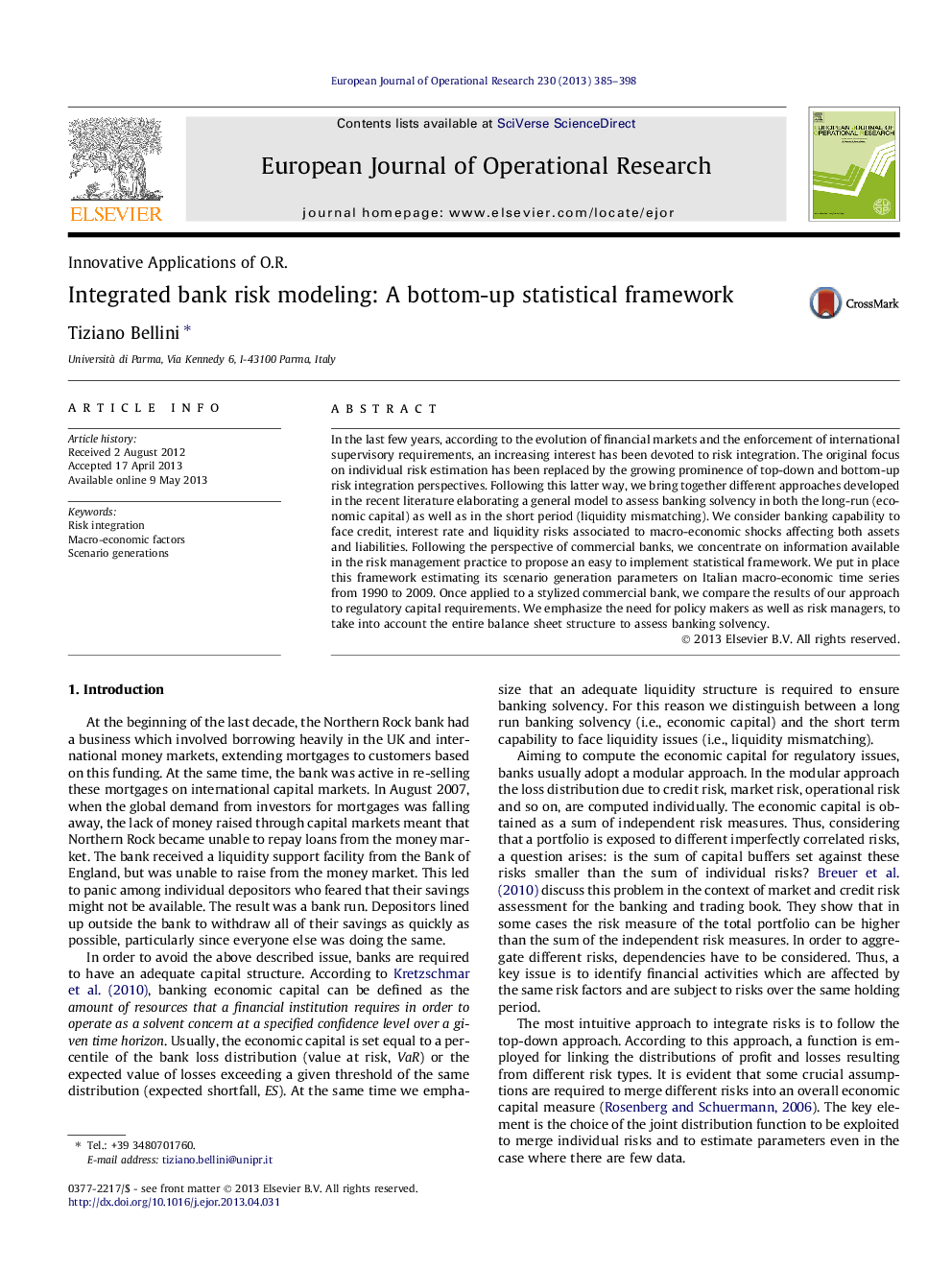| Article ID | Journal | Published Year | Pages | File Type |
|---|---|---|---|---|
| 478294 | European Journal of Operational Research | 2013 | 14 Pages |
•Identify a general model to represent banking interactions.•Assess banking solvency in both the long-run as well as in the short period.•Represent risk sources from the macro-economic and the bank-specific perspectives.•Develop a statistical framework to integrate credit, interest rate and liquidity risks.•Outline risk issues that policy makers and risk managers should consider.
In the last few years, according to the evolution of financial markets and the enforcement of international supervisory requirements, an increasing interest has been devoted to risk integration. The original focus on individual risk estimation has been replaced by the growing prominence of top-down and bottom-up risk integration perspectives. Following this latter way, we bring together different approaches developed in the recent literature elaborating a general model to assess banking solvency in both the long-run (economic capital) as well as in the short period (liquidity mismatching). We consider banking capability to face credit, interest rate and liquidity risks associated to macro-economic shocks affecting both assets and liabilities. Following the perspective of commercial banks, we concentrate on information available in the risk management practice to propose an easy to implement statistical framework. We put in place this framework estimating its scenario generation parameters on Italian macro-economic time series from 1990 to 2009. Once applied to a stylized commercial bank, we compare the results of our approach to regulatory capital requirements. We emphasize the need for policy makers as well as risk managers, to take into account the entire balance sheet structure to assess banking solvency.
